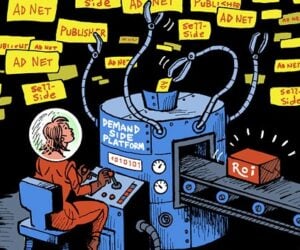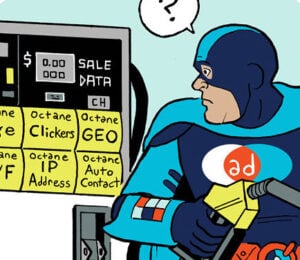With the pace of online culture and digital media, an advertiser might use a new meme at the beginning of a campaign that already feels outdated before the campaign has run its course.
“The speed of culture has outpaced ad tech,” said Crystal Foote, founder and head of partnerships at the ad tech company Digital Culture Group (DCG). Emerging audiences and growth audiences that should be targeted during a campaign “can change next week,” she added, “so we don’t have time to be behind.”
That’s why, on Wednesday, DCG launched the Audience Resonance Index (ARI), an AI-powered tool designed to understand emotional receptivity for certain audiences and predict who will engage with specific content.
Historically, the same ads were shown to every person watching a show, each of whom were watching at the same time, according to Foote. Now, everyone has their own screen and their own ad experience.
How the sausage gets made
With the ARI product, DCG wants to connect ad impressions to a place and time, rather than to an individual identifier or audience demographic. Instead of analyzing historical data from six months or a year ago, said Foote, ARI’s goal is to look at what’s happening in a given moment – culturally, politically and economically – to understand the audience.
A brand reaches out to DCG with a request for proposal, Foote explained, which the vendor then “reverse engineers” to track nine different resonance points using what ARI calls resonance AI. The resonance points include geo-cultural fit, cultural vernacular and platform relevance, and are scored by the AI to measure how well a message aligns with a person’s values, identity and state of mind.
ARI also uses public data from Nielsen and the Association of National Advertisers alongside a proprietary data set, she said. The report returns insights on what the brand is doing well and potential changes that would improve results, such as tweaks to targeting parameters, creative choices or a new call to action.
Mind, body and spirits
How does a resonance score actually get put into action, though?
The bourbon brand Edmond’s Honor was a pilot client of the ARI product. According to Dia Simms, co-founder and board chair at Pronghorn, which owns Edmond’s Honor, the company was able to see that foodies and higher-income households were more likely to be interested in its product.
Which is unsurprising. What did come as a surprise, Simms told AdExchanger, was how important storytelling was to the audience, too.
Edmond’s Honor is a story-oriented brand, named for the botanist who discovered vanilla pollination. Audiences who were looking for “a real story” spent about six times longer engaging with Edmond’s Honor content than with Pronghorn’s other brands, Simms said.
Now the bourbon brand is shifting its creative to partner with restaurants that put a focus on storytelling with their menus and craft cocktails.
“We hadn’t contemplated literally any of this,” Simms said, until Edmond’s Honor saw audience insights providing more detail on the kinds of people who respond best to the brand.
Another worthwhile tidbit, she said, was that early adopters of Sriracha are “uniquely interested in being the first adopters of flavor-forward culinary experiences” – something the brand had already suspected but now has confirmation to back it up.
Hooked on a feeling
Every brand wants to be in touch with its audience. But how do brands target based on emotions without creeping people out or preying on their vulnerabilities?
“Everything is emotionally based,” said Foote, and people want ads that are relevant to what they’re currently experiencing. But “you want to make sure that it’s still a positive resonance.”
This can mean providing new ads to people based on a certain stage of life, like a promotion, or even using data signals to determine which ads are no longer relevant. The ARI results also don’t connect to individual IDs or audience impressions.
And ARI doesn’t create audience segments to target. It informs the agency or marketer, but isn’t the DSP or ad server. It has no way (thankfully) of tracking individual people’s feelings.
“It’s good,” said Foote, “but it’s not that good.”












